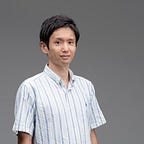I joined the KYOTO Design Lab to research “Super Comprehensive” Human-Centered Design.
I was invited by the designer-in-residence program of the Kyoto Design Lab (Dlab) at Kyoto Institute of Technology. I will stay in Kyoto as a visiting design researcher/lecturer and research a socio-technical vision of Kyoto city and human from June 1 to mid-August.
The Designer in Residence is a competitive Program in which an emerging international talent in design is invited to spend a period of time at the Kyoto Design Lab. There they work jointly with KIT students and staff to develop new signature pieces in response to the context of Kyoto and to the research expertise of the Kyoto Institute of Technology. The resulting work is then exhibited at Kyoto D-Lab’s Tokyo Gallery in 3331 Arts Chiyoda. — from Dlab Official HP
What will I research?
Previously I worked at IBM for ten years with moving divisions from a business strategist to a UX designer and a product design lead at IBM Design in recent years. As a design thinking facilitator, I involved in the entire process of human-centered service development.
Mostly as client work, I started a project with a business planning/strategy team of Japanese companies in various industries. With crossing realms of Business, Technology, and Design, I created a creative concept from scratch using design thinking → Scrum development → Growth in lean start-up cycle.
I was certified as an IBM Design Thinking Coach and Scrum Master, and also I received the training of IBM Design Thinking from Distinguished Designer (now Vice President) Doug Powell. During my professional learning, I was interested in Research through Design (not just User research), intercommunication between theory and practice, and facilitation of human imagination.
Though design thinking and co-creation method is developing all over the world right now, IBM has already announced to transform from a technology company to a design company in 2013 as its own corporate mission. During this transient period, I experienced creating services with changing a mind and organization of project members and clients. This experience has become my current core skill.
On the other hand, while experiencing various design projects, I came to feel a lot of difficulties of “Human-Centered” design.
Understand the user and Solve the user’s pain.
It is a spell of UX design that has been cast out naturally and dogmatically. However, in some co-creation projects with clients, they misunderstand that design thinking is just a tool and ask questions such as “Can I become creative if I use persona?” In addition, within a limited project period, I felt a question that we can say that “We understand the user!” with just specific research for a few days to a few weeks.
So, my question is:
Where can we say “Human-Centered Design?”
And also, what is “human?”
It is a simple, fundamental and ultimate question.
“Super Comprehensive” Human-Centered Design
What kind of approach is necessary to truly understand “human” and do the ultimate “Human-Centered” design? It is not good if we just look at the current context, but there are some hypotheses that I have created in my hands-on experiences.
- One hypothesis is that it is necessary to consider the continuous timeline from the distant past to the present and the further future in order to define the context of “the present” where humans are now alive.
- One hypothesis is that it is necessary to grasp all kinds of studies interdisciplinary because there are sociology, anthropology, cognitive psychology, ecological behavior science, medicine, philosophy, and all studies exist in order to understand “human.”
- One hypothesis is that it is necessary to understand “human” in interaction with others, machines, and nature, as words such as “anticipated UX” and “cumulative UX” are used in UX white paper.
Finally, it is an ultra-widely grand hypothesis that there is a “true” human-centered design beyond all comprehensive disciplines, complex social systems, the inner and outer human perspectives, and the past and post planet.
I understand that this is what is happening in the world of design science. As the methodology of post design thinking age, some universities and companies have begun to advocate new design methodology for the 21st century. For example, RCA’s Speculative Design critiques human and future, CMU’s Transition Design cherishes the human ancient history and indigenous culture, IDEO’s Circular Design tackles complex social ecosystem, and Don Norman described the concept of “Design X” based on complex human behavior and social system in 2015.
I would like to explore how Kyoto and human vision can be drawn from the perspective of the Super-Comprehensive design. I will work with Dr. Daijiro Mizuno, who has been researching speculative design and super comprehensive design in Japan.
The scope of design is expanding. Even organization, culture and ideology is the target of design right now. In order to explore such a grand theme, not only the final deliverable but also the design process is important, so I would like to record the actual work process and propose it as much as possible.
I believe that every design is an activity that shapes “the future of human beings.” This activity is driven by the inquiring mind and romanticism over “understanding human beings.” I do not know at all what kind of output will be produced and what future scenario of Kyoto and human beings can be drawn, but I hope to find the path to propose the “true” human-centered vision from the Super Comprehensive approach.
